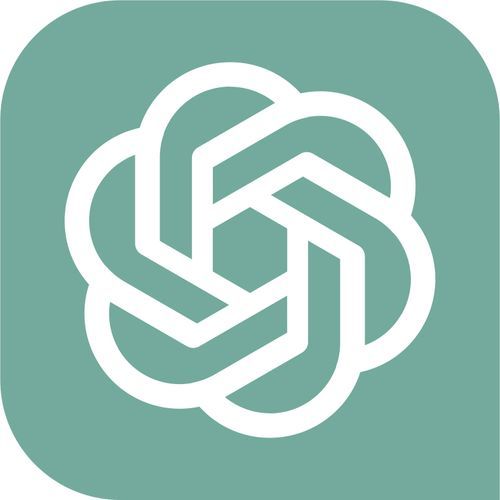Library of teambuilding games & icebreakers


Pterodactyl
Here’s a quirky new game that has hilarious results. In “Pterodactyl” (which is hard enough to spell correctly), players completely cover their teeth with their lips. One player starts the game by saying “Pterodactyl” to someone else without showing their teeth. If neither player cracks up and laughs, the next player passes it on. Twists can come into the game if you add a silly face, cross your eyes, or use a strange voice. If you make another player laugh and show their teeth, they’re out! Continue this speaking game until only one Pterodactyl champion remains!
Pterodactyl
How to play Pterodactyl
Here’s a quirky new game that has hilarious results. In “Pterodactyl” (which is hard enough to spell correctly), players completely cover their teeth with their lips. One player starts the game by saying “Pterodactyl” to someone else without showing their teeth. If neither player cracks up and laughs, the next player passes it on.
Twists can come into the game if you add a silly face, cross your eyes, or use a strange voice. If you make another player laugh and show their teeth, they’re out! Continue this speaking game until only one Pterodactyl champion remains!
Gallery



Video


Mental gymnastics
This game is all about mental energy. Easy to play and can be done anywhere from a break room, to the office common space, mental gymnastics can be any type of quick trivia game, even including Pictionary if you have a lot of artists on your team.
Mental gymnastics
This game is all about mental energy. Easy to play and can be done anywhere from a break room, to the office common space, mental gymnastics can be any type of quick trivia game, even including Pictionary if you have a lot of artists on your team.
Perfect for teams, trivia encourages employees to work together, relying on their smarts and pop culture knowledge. You can even make the game workplace specific and test how much your team knows about one another, ultimately bringing them closer together.
Gallery



Video


Rolling the dice
You can’t beat this one for simplicity. Have players break into groups of two and provide a set of dice to each pair. The goal is simple: roll the die and try to get the highest total possible in one minute. So, one person should roll and the other can document the number they get. This should go on as many times as they can in one minute. Whoever has the highest number wins.
Rolling the dice
How to play Rolling the dice
You can’t beat this one for simplicity. Have players break into groups of two and provide a set of dice to each pair. The goal is simple: roll the die and try to get the highest total possible in one minute. So, one person should roll and the other can document the number they get. This should go on as many times as they can in one minute. Whoever has the highest number wins.
Gallery



Video


Catch-All
For this group, have everyone stand in a circle and begin with a ball. Share which topic the exercise will be based on, and then let everyone know that they will be stating something they have previously learned about the topic. Then, throw the ball to the next person. If, for instance, your topic is accounting, then when one person has the ball, they might say something like “I learned that most tax issues come down to manual accounting errors.” Then they’ll toss the ball to the next person, who will share another bit of information they know or have learned previously. This makes training a lot more interactive, as everyone gets the chance to contribute and learn from a variety of perspectives.
Catch-All
How to play Catch-All
For this group, have everyone stand in a circle and begin with a ball. Share which topic the exercise will be based on, and then let everyone know that they will be stating something they have previously learned about the topic. Then, throw the ball to the next person. If, for instance, your topic is accounting, then when one person has the ball, they might say something like “I learned that most tax issues come down to manual accounting errors.” Then they’ll toss the ball to the next person, who will share another bit of information they know or have learned previously. This makes training a lot more interactive, as everyone gets the chance to contribute and learn from a variety of perspectives.
Gallery



Video


Broom Hockey
Broom Hockey is just what it sounds like! But, instead of playing with a puck and sticks, you grab some brooms from the cleaning closet and make a puck out of paper. Roll it up into a tight ball so that it rolls smoothly in the direction you want.
Broom Hockey
How to play Broom Hockey
Broom Hockey is just what it sounds like! But, instead of playing with a puck and sticks, you grab some brooms from the cleaning closet and make a puck out of paper. Roll it up into a tight ball so that it rolls smoothly in the direction you want.
It’s best to have a designated open area to play this game, so use any break rooms or conference rooms, using the underside of a desk or a trash bin as your goal marker.
Gallery



Video


Role Model Analysis
Ready to take a page from the playbook of the greats? Enter the Role Model Analysis, where participants embark on a journey of inspiration and practical insights. The game plan? Identify role models or mentors who've aced goals similar to the ones you're chasing. This activity allows for studying the traits and strategies of those who've been there, done that, and applying those lessons to your own goal-setting approach. Top Tip for Facilitator: Encourage diversity in role models. Remind participants that role models can come from various fields and backgrounds. The key is to draw inspiration from a range of sources. As the facilitator, guide them to explore traits and strategies that resonate with their unique journey, creating a customized roadmap to success.
Role Model Analysis
Ready to take a page from the playbook of the greats? Enter the Role Model Analysis, where participants embark on a journey of inspiration and practical insights. The game plan? Identify role models or mentors who've aced goals similar to the ones you're chasing.
This activity allows for studying the traits and strategies of those who've been there, done that, and applying those lessons to your own goal-setting approach.
Top Tip for Facilitator:
- Encourage diversity in role models. Remind participants that role models can come from various fields and backgrounds. The key is to draw inspiration from a range of sources.
- As the facilitator, guide them to explore traits and strategies that resonate with their unique journey, creating a customized roadmap to success.
Gallery



Video


Backward ABC
This is a great one because no supplies are required! If you’re tight on space or budget give this game a try. For this activity, each player must attempt to say the alphabet in reverse. They only have one minute to complete the task and whoever can say the full alphabet backwards in the shortest amount of time wins.
Backward ABC
How to play Backward ABC
This is a great one because no supplies are required! If you’re tight on space or budget give this game a try. For this activity, each player must attempt to say the alphabet in reverse. They only have one minute to complete the task and whoever can say the full alphabet backwards in the shortest amount of time wins.
Gallery



Video


Mirror game
Two people stand across from each other and mirror each other's movements, trying to stay in sync.
Mirror game
How to play Mirror game
Two people stand across from each other and mirror each other's movements, trying to stay in sync.
Gallery



Video


Home workspace tours
They say you can learn a lot about someone by looking at their home, which is probably why workspace tours are such good ways to build trust in remote teams!
Home workspace tours
They say you can learn a lot about someone by looking at their home, which is probably why workspace tours are such good ways to build trust in remote teams!
How to play Home workspace tours
There’s absolutely nothing complicated about this activity. It’s as simple as giving each employee a chance to show their colleagues where they work. They pick up their laptop, smartphone, tablet, or webcam, giving the team a quick tour of their office – or wherever they happen to be working that day.
It’s surprisingly fun though! Employees learn new things about each other, discover mutual interests, reveal their quirks and eccentricities, and gain a much clearer picture of who they work with.
Expect giggles, jokes, friendly banter, and fresh camaraderie to ensue.
You can do these tours at any time. However, we think they’re most enjoyable when saved for morning meetings or the final group video call of the day. Take that approach and you either start or finish the workday with something light-hearted. It’ll set a positive tone and put a smile on people’s faces.
What you need:
- N/A. However, you may want to send an email in advance to check everyone’s happy to give a tour of their workspace (and give them time to hide anything too embarrassing!).
Gallery



Video


Among us
If you're a younger team with an appetite for video games, this might be worth a try!Among Us is an online game where an ‘imposter’ attempts to eliminate members of the ‘crew’ without being discovered.The game can only be played by a maximum of ten players, so you might want to consider putting together a league if you have a larger workforce.
Among us
If you're a younger team with an appetite for video games, this might be worth a try!
Among Us is an online game where an ‘imposter’ attempts to eliminate members of the ‘crew’ without being discovered.
How to play Among us
The game can only be played by a maximum of ten players, so you might want to consider putting together a league if you have a larger workforce.
Gallery



Video


Perfect square
The perfect game for future leaders, Perfect Square pushes teams to communicate clearly and establish a leader who will help them complete the game. Another blindfold game that involves teams working together to, you guessed it, form a perfect square.
Perfect square
The perfect game for future leaders, Perfect Square pushes teams to communicate clearly and establish a leader who will help them complete the game. Another blindfold game that involves teams working together to, you guessed it, form a perfect square.
How to play:
Break up into small teams, around four to six people, and give each group a rope. Team members pick up their rope, which is still a circle, and work together to create a perfect square, which isn’t easy to achieve when you can’t see anything! Teams form a circle with their rope on the floor, and everyone gets blindfolded.
This game encourages teams to establish a leader who can help focus and guide the other players to move in the right direction to achieve some four-sided perfection,
Materials you’ll need: Rope, material/ cloth for blindfolds.
How many people: Small to mid-sized teams (8-16 people)
Gallery



Video


Safety storyboard
Provide employees with materials to create storyboards that illustrate a safety scenario and its resolution. Display the storyboards and have a voting process to select the best ones. Offer prizes for the top storyboards.Safety storyboards combine creativity with safety awareness, making it an engaging way to discuss and visualize safety procedures. It encourages employees to think through safety scenarios and communicate them effectively. Plus, it’s a fun and artistic activity.
Safety storyboard
How to play:
Provide employees with materials to create storyboards that illustrate a safety scenario and its resolution. Display the storyboards and have a voting process to select the best ones. Offer prizes for the top storyboards.
Safety storyboards combine creativity with safety awareness, making it an engaging way to discuss and visualize safety procedures. It encourages employees to think through safety scenarios and communicate them effectively. Plus, it’s a fun and artistic activity.
Gallery



Video


Adaptability
Imagine a team that rolls with the punches. That's adaptability—being cool with change and helping colleagues navigate the twists and turns of work life. Adaptability activity - "Change challenge" brainstorm: Present a hypothetical or real work-related change that the team might face in the future. Divide participants into groups and provide them with markers, flip charts, or whiteboards. Instruct each group to brainstorm creative ways to embrace and adapt to the change, focusing on positive outcomes. Encourage groups to discuss their ideas and strategies for effectively navigating the proposed change. This brainstorming activity enhances adaptability skills, encourages innovative thinking and promotes a proactive approach to change management.
Adaptability
Imagine a team that rolls with the punches. That's adaptability—being cool with change and helping colleagues navigate the twists and turns of work life.
Adaptability activity - "Change challenge" brainstorm:
- Present a hypothetical or real work-related change that the team might face in the future.
- Divide participants into groups and provide them with markers, flip charts, or whiteboards.
- Instruct each group to brainstorm creative ways to embrace and adapt to the change, focusing on positive outcomes.
- Encourage groups to discuss their ideas and strategies for effectively navigating the proposed change.
This brainstorming activity enhances adaptability skills, encourages innovative thinking and promotes a proactive approach to change management.
Gallery



Video


Egg and Spoon Race
An egg and spoon race is another game that’s as fun for adults as it is for children! It’s also incredibly simple. As the name suggests, all you need is an egg and spoon for each participant. From there, you set a start and end point, line everyone up with the egg balanced on their spoon, and blow a whistle for the race to begin! The first person to cross the finish line with their egg still intact wins. If someone drops their egg on the way, they must stop and pick it back up using only their spoon (no hands allowed!) before continuing. Want to make the game less messy? Consider boiling the eggs beforehand. It’ll stop them from cracking when dropped, reducing the amount of cleaning up you’ll do when everyone’s ready to go home. You’ll be able to re-use the eggs, too – a bonus if you’re running multiple egg-and-spoon races throughout the day. Oh, and don’t hesitate to combine this Field game for adults with the three-legged race we mentioned earlier! Making participants balance an egg on a spoon while their leg’s also joined to a teammate’s is a recipe for fun.
Egg and Spoon Race
How to play Egg and Spoon Race
An egg and spoon race is another game that’s as fun for adults as it is for children! It’s also incredibly simple. As the name suggests, all you need is an egg and spoon for each participant. From there, you set a start and end point, line everyone up with the egg balanced on their spoon, and blow a whistle for the race to begin!
The first person to cross the finish line with their egg still intact wins. If someone drops their egg on the way, they must stop and pick it back up using only their spoon (no hands allowed!) before continuing.
Want to make the game less messy? Consider boiling the eggs beforehand. It’ll stop them from cracking when dropped, reducing the amount of cleaning up you’ll do when everyone’s ready to go home. You’ll be able to re-use the eggs, too – a bonus if you’re running multiple egg-and-spoon races throughout the day.
Oh, and don’t hesitate to combine this Field game for adults with the three-legged race we mentioned earlier! Making participants balance an egg on a spoon while their leg’s also joined to a teammate’s is a recipe for fun.
Gallery



Video


Bucket List
Learning about your coworker's wants and dreams outside of the office is a great way of building stronger, lasting relationships.
Bucket List
Learning about your coworker's wants and dreams outside of the office is a great way of building stronger, lasting relationships.
Great for: Interpersonal bonding
Duration: 5 minutes
Players: 4+
You’ll need: Nothing
How to play Bucket List
Setup: Ask your group to sit together in a circle, on chairs or on the floor.
To play: One by one, players tell five items from their bucket list to the rest of the group. This gives employees vital insight into the aspirations of their coworkers.
Gallery



Video


Flag rush
Ready for some outdoor action? In flag rush, teams compete to capture the opposing team’s flag without getting tagged. It’s all about strategy, speed, and staying out of sight—until it’s time for that final dash to the flag!It’s a great way to get everyone moving, thinking on their feet, and diving into some friendly competition. Plus, who doesn’t love a good old-fashioned game of capture the flag?
Flag rush
Ready for some outdoor action? In flag rush, teams compete to capture the opposing team’s flag without getting tagged. It’s all about strategy, speed, and staying out of sight—until it’s time for that final dash to the flag!
It’s a great way to get everyone moving, thinking on their feet, and diving into some friendly competition. Plus, who doesn’t love a good old-fashioned game of capture the flag?
How to play:
- Split into two teams, each with a flag to protect.
- Try to capture the other team’s flag while avoiding getting tagged.
- First team to grab the flag and return it to base wins!
Gallery



Video


Paranoia
Sitting in a circle, players take turns whispering a question into the ear of the person on their right – the answer to which is someone else playing the game. Whoever’s asked the question then points at whoever they believe is the answer. For example, you might ask, “who is the best-looking person in the group?” to Alice, who might point at James across the room. But poor James doesn’t know what the question was! Hence the name, Paranoia. The only way for James to find out is to accept a dare/forfeit. If he’s unwilling to do so, then it becomes Alice’s turn to whisper a question to whoever’s next to her. A word of caution: Paranoia’s a fun and unique question game, but it isn’t without tension! We recommend you only play if everyone on the team is close friends.
Paranoia
How to play Paranoia
Sitting in a circle, players take turns whispering a question into the ear of the person on their right – the answer to which is someone else playing the game. Whoever’s asked the question then points at whoever they believe is the answer.
For example, you might ask, “who is the best-looking person in the group?” to Alice, who might point at James across the room. But poor James doesn’t know what the question was! Hence the name, Paranoia. The only way for James to find out is to accept a dare/forfeit. If he’s unwilling to do so, then it becomes Alice’s turn to whisper a question to whoever’s next to her.
A word of caution: Paranoia’s a fun and unique question game, but it isn’t without tension! We recommend you only play if everyone on the team is close friends.
Gallery



Video


Cup toppers
For this game you’ll need some cups or tumblers and some old compact discs. Place the cup a reasonable amount of space away from the player (such as a few feet, across a table). Have them take a stack of CDs and toss them, one by one, onto the cup. Their goal is to land as many as they can flat onto the top of the cup. Whoever strikes the most landings wins.
Cup toppers
How to Cup toppers
For this game you’ll need some cups or tumblers and some old compact discs. Place the cup a reasonable amount of space away from the player (such as a few feet, across a table). Have them take a stack of CDs and toss them, one by one, onto the cup. Their goal is to land as many as they can flat onto the top of the cup. Whoever strikes the most landings wins.
Gallery



Video


Back-to-back sketch
In back-to-back sketch, one person describes an image while their partner, sitting back-to-back with them, draws it based solely on the description. No peeking allowed! It’s a great way to test communication skills—and usually leads to some very entertaining (and often unrecognizable) drawings.This game encourages clear instructions and active listening, with plenty of laughs thrown in.
Back-to-back sketch
In back-to-back sketch, one person describes an image while their partner, sitting back-to-back with them, draws it based solely on the description. No peeking allowed! It’s a great way to test communication skills—and usually leads to some very entertaining (and often unrecognizable) drawings.
This game encourages clear instructions and active listening, with plenty of laughs thrown in.
How to play:
- Pair up teammates to sit back-to-back.
- One person describes an image while the other draws based on the description.
- Compare the final drawings with the original image for some laughs!
Gallery



Video


Secret word
Insert some fun and laughter into your everyday office work by playing this silly game. To play, start by writing down any word on a piece of paper (An object or action is usually easiest). Choose your first participant and have them place the paper on their forehead (without looking at it). It’s key that the player doesn’t know what word they are displaying! Other players should gesture to try to get them to guess the word without actually speaking. The person with the card will try to guess the word based on the actions of everyone around them.
Secret word
How to play Secret word
Insert some fun and laughter into your everyday office work by playing this silly game. To play, start by writing down any word on a piece of paper (An object or action is usually easiest). Choose your first participant and have them place the paper on their forehead (without looking at it). It’s key that the player doesn’t know what word they are displaying! Other players should gesture to try to get them to guess the word without actually speaking. The person with the card will try to guess the word based on the actions of everyone around them.
Gallery



Video


Make the team with…
This simple game needs little material and is a perfect icebreaker—a perfect in-person game for company retreats and onboarding events.
Make the team with…
This simple game needs little material and is a perfect icebreaker—a perfect in-person game for company retreats and onboarding events.
How to play:
One person from the group, ideally a team leader, calls out the facts or questions that team members just asked one another. Individuals have to make teams as quickly as possible based on the call-outs, like” people with one cat” or “people who play video games.”
Individuals must quickly figure out who meets the criteria and form a team. This exercise can be repeated with as many questions as you like.
Materials you’ll need Just yourselves and some places to sit. If you have a large team, ensure enough space to play.
How many people: Small to large teams (8 to 25+ people)
Gallery



Video


Mock commercials
This activity is the opposite of a quick office game. It requires some time and preparation, but is worth it! Have employees choose a product or service and then create a commercial to sell it. You’ll need a space for everyone to act in, plus recording devices and a way for everyone to watch. Some companies add another layer of complexity by using two bowls. Each bowl has several slips of paper with a word written on it. In one bowl is the style of commercials, such as humorous, scary, or emotional. In the other bowl is an object, such as soda or a copy machine. Have each group pick one paper from each bowl and base their commercial on that. So, you might have one group that creates a scary commercial about a copy machine. Doing it this way necessitates more creativity and often leads to a lot of laughs.
Mock commercials
How to play Mock commercials
This activity is the opposite of a quick office game. It requires some time and preparation, but is worth it! Have employees choose a product or service and then create a commercial to sell it. You’ll need a space for everyone to act in, plus recording devices and a way for everyone to watch. Some companies add another layer of complexity by using two bowls.
Each bowl has several slips of paper with a word written on it. In one bowl is the style of commercials, such as humorous, scary, or emotional. In the other bowl is an object, such as soda or a copy machine. Have each group pick one paper from each bowl and base their commercial on that. So, you might have one group that creates a scary commercial about a copy machine. Doing it this way necessitates more creativity and often leads to a lot of laughs.
Gallery



Video


Would You Rather?
In this straightforward but effective game, an employee is asked what they would do in a difficult situation. It could be along the lines of “Would you rather be always cold or always hot?” or “would you rather listen to your least favorite music everyday or a baby crying everyday”. Make sure that you ask for their reasons as to why they chose a particular answer, as this will highlight their thought process and inject some personality into the game. It’s a fantastic way to really get to know the likes and dislikes of your employees which could be used to your advantage as you strive to make the office a place of enjoyment.If you’re lacking on the creative questions to ask in the game, make sure to check out our extensive list of Would You Rather questions for inspiration!
Would You Rather?
How to play Would You Rather?
In this straightforward but effective game, an employee is asked what they would do in a difficult situation. It could be along the lines of “Would you rather be always cold or always hot?” or “would you rather listen to your least favorite music everyday or a baby crying everyday”.
Make sure that you ask for their reasons as to why they chose a particular answer, as this will highlight their thought process and inject some personality into the game.
It’s a fantastic way to really get to know the likes and dislikes of your employees which could be used to your advantage as you strive to make the office a place of enjoyment.
If you’re lacking on the creative questions to ask in the game, make sure to check out our extensive list of Would You Rather questions for inspiration!
Gallery



Video


Puzzle dash
Ready, set, puzzle! In puzzle dash, teams race against the clock to complete a jigsaw puzzle or brain teaser. The fastest team to finish wins, promoting problem-solving, quick thinking, and a bit of healthy competition.This game is perfect for sharpening your team’s focus, collaboration, and time management skills. Whether it’s a jigsaw or a tricky brain teaser, puzzle dash brings out the best in quick thinking under pressure—all while having some fun.
Puzzle dash
Ready, set, puzzle! In puzzle dash, teams race against the clock to complete a jigsaw puzzle or brain teaser. The fastest team to finish wins, promoting problem-solving, quick thinking, and a bit of healthy competition.
This game is perfect for sharpening your team’s focus, collaboration, and time management skills. Whether it’s a jigsaw or a tricky brain teaser, puzzle dash brings out the best in quick thinking under pressure—all while having some fun.
How to play:
- Divide into teams and give each team a puzzle or brain teaser (e.g., a 100-piece jigsaw or a Sudoku challenge).
- Set a time limit and race to complete it as quickly as possible.
- The team that finishes first (or makes the most progress) wins!
Gallery



Video

















